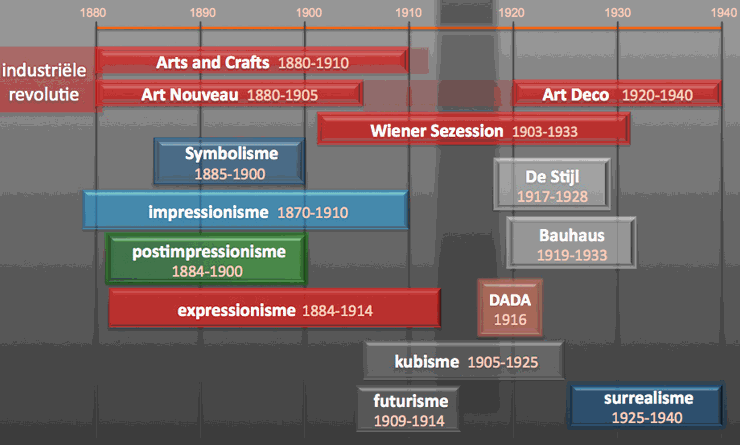This movement in painting is in the second half of the 19 ‘ century in France. They began as a contrarian movement opposite the then universally acclaimed (and officially recognized by the State) consisted of really severe academic art. Eventually it developed Impressionism to a totally new style that stood at the cradle of the modernism of the 20th century.
Typical aspects of Impressionism are the focus on the experience of the moment (‘ impression ‘) and the choice of themes from the ‘ modern life ‘, the particular attention to lighting effects and color and sketch-like method , also working in the open air is innovative. Among the best known representatives belonged art painters such as Claude Monet, Pierre-Auguste Renoir, Edgar Degas and Paul Cézanne.
The Impressionists exhibited their work between 1874 and 1886 on eight by themselves organized exhibitions in Paris. After their innovative role was continued by neo-1886 and Post-Impressionist groups. Substantive and technical was Impressionism a reaction movement. One went in against the ruling Conservative-classical views of the salon juries. The intention in the artists was the immediate visual display of the visible as it is at that time showed.
The Impressionists also made use of the new medium “photography”. They made use of the possibilities offered by this new medium gave them. So are the fleeting display of objects and people in their paintings similar to that of a camera. There are clear parallels between photos and paintings from that era. Cut can also be traced to the knowledge of photography. Important in impressionism is no longer the exact depiction of the forms and materials but especially the colorful solution that Sun, light and air to everything.
Impressionism in Netherlands got its own form: “by the “Hague School”.
Impressionism such as that expressed in France (-the ode to the light and the glorification of bright colors –) was by these artists in the same way. They chose a more subdued palette appropriate to the atmosphere and colours of the Dutch country. The landscape and the lives of fishermen and farmers were their main subjects.
